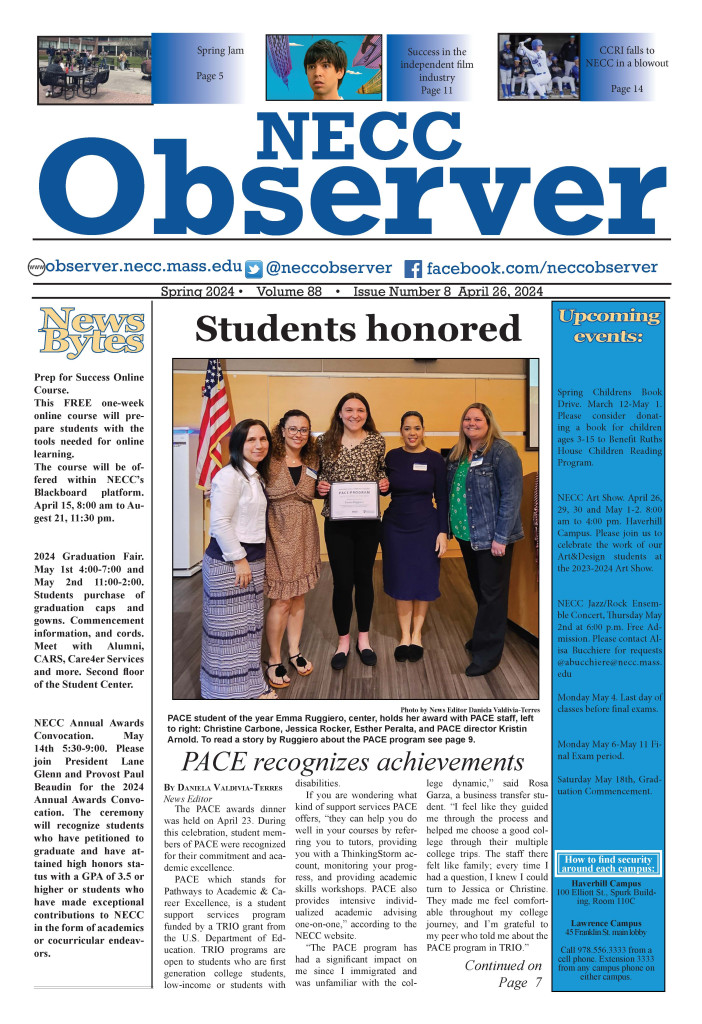The teachers and students at trade and technical high schools have been suffering over the past year due to COVID-19 and the implementation of online learning.
Trade schools like Whittier Technical High School and Essex Agricultural High School have been at the tail end of the changes brought on by COVID-19. (Editor’s note: This story reflects experiences at the vocational schools before they bgean to phase in an in-person schedule in mid-March..)
Students have lost a large part of their education with the absence of hands-on learning, a fundamental part of learning a trade.
Many things have been left behind as they move forward in school. Learning solely from a book via a computer does not provide these students with the tools and skills they need to be successful in their trades once they leave high school.
Danielle Young is a student at Essex Agricultural High School, studying sustainable horticulture.
She has found learning to maintain plants over a computer to be unsuccessful and upsetting. Young says that with online learning “you lose the tactile part of education and the rest doesn’t stick well. It’s extremely draining to sit there looking at a screen all day, to the point that you don’t want to do anything.”
Learning the techniques over the computer does nothing for students if they don’t have the ability to apply it in person with the teacher’s assistance. And motivation to get up and sit on a computer all day is lacking. They are no longer excited for school with the repetitive nature of computer work, day in and day out.
Nicky Haginicolas, a cosmetology teacher at Whittier Tech. has had a really hard time teaching her students how to do hair and makeup over the computer.
She has been forced to only teach the basics of the class, focusing on rudimentary and broad ideas.
She explains that “looking at a screen lacks the one on one contact needed to teach students body mechanics and hair artistry. Because it is a hands-on creative expression, in order to teach the finer elements, such as body and hand placement mechanics, in order to teach that, you have to view the student replicating it.”
She can teach the ideas and explain the steps over the computer but the ability to apply it to a real human being has been lost.
It has taken a lot of time and effort for these teachers to adjust to teaching a trade in a remote learning setting. They have had to modify their teaching styles and come up with ways to educate their students as best as possible.
Haginicolas has settled on creating videos of herself practicing on a mannequin to show her students what to do but that has come with its own set of challenges.
The lack of one on one contact with her students has deeply affected their learning.
“My students have lost the quality time they need to utilize the information they’ve been given,” says Haginicolas.
One of Haginicolas’s students, Emilia Carducci agrees, stating, “it’s not easy doing hair by yourself.”
The stress on these students and teachers has only increased as time has gone on and there is no way of knowing when things will go back to normal.
It is extremely hard for the students to stay focused and do all their work at home. Carducci bluntly says that “when I’m home, I want to be home. It’s stressful to do everything in your bedroom but you just have to keep going I guess.”
Hands-on classwork is a principle of trade schools and without it, these students are losing the very education they came to these schools for. They are not learning what they need and even though school is continuing, their education has stagnated.
Haginicolas’s final statement perfectly sums up the effect COVID-19 has had on these trade schools, “I just want this year to be over.”

